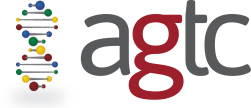DESCRIPTION OF CAPITAL STOCK
The following section contains a description of our common stock and other securities that we have issued from time to time. Our authorized
capital stock consists of 150,000,000 shares of common stock, $0.001 par value per share, and 5,000,000 shares of preferred stock, $0.001 par value per share. As of January 1, 2020, we had 18,219,315 shares of common stock issued and
outstanding, 4,112,347 shares of common stock potentially issuable pursuant to outstanding stock options and 168,000 shares of common stock potentially issuable upon vesting and settlement of outstanding restricted stock units. As of January 1,
2020, there were 24 holders of record of our common stock.
Common Stock
Voting rights. Holders of our common stock are entitled to one vote per share held of record on all matters to be voted upon by our
stockholders. The election of directors by our stockholders is determined by a plurality of the votes cast by the stockholders entitled to vote on the election. Other matters subject to a vote by our stockholders are decided by the affirmative vote
of our stockholders having a majority in voting power of the votes cast by the stockholders present or represented and voting on such matter. Our common stock does not have cumulative voting rights.
Dividends. Subject to preferences that may be applicable to the holders of any outstanding shares of our preferred stock, the holders
of our common stock are entitled to receive such lawful dividends as may be declared by our board of directors.
Liquidation and
dissolution. In the event of our liquidation, dissolution or winding up, and subject to the rights of the holders of any outstanding shares of our preferred stock, the holders of shares of our common stock will be entitled to receive pro rata
all of our remaining assets available for distribution to our stockholders.
Other rights and restrictions. Our certificate of
incorporation does not permit us to redeem shares of our common stock at our election, provide for a sinking fund with respect to our common stock or provide for the granting of preemptive rights to any stockholder. All outstanding shares are fully
paid and nonassessable.
Preferred Stock
Our board of directors is authorized, without stockholder approval, from time to time to issue up to 5,000,000 shares of preferred stock in one
or more series, each of the series to have such rights and preferences, including voting rights, dividend rights, conversion rights, redemption privileges and liquidation preferences, as the board of directors may determine. The rights of the
holders of common stock will be subject to, and may be adversely affected by, the rights of holders of any preferred stock that we may issue in the future. The issuance of preferred stock, while providing desirable flexibility in connection with
possible acquisitions and other corporate purposes, could have the effect of making it more difficult for others to acquire, or of discouraging others from attempting to acquire, a majority of our outstanding voting stock. We have no current plans
to issue any shares of preferred stock.
Options
As of January 1, 2020, options to purchase 4,112,347 shares of our common stock were outstanding under our equity compensation plans, at a
weighted average exercise price of $7.75 per share.
Anti-Takeover Effects of Provisions of Delaware Law and Our Charter and By-laws
Provisions of Delaware law and our certificate of incorporation and by-laws could make it more difficult to acquire us by means of a tender offer, a proxy contest, open market purchases, removal of incumbent directors
- 23 -
